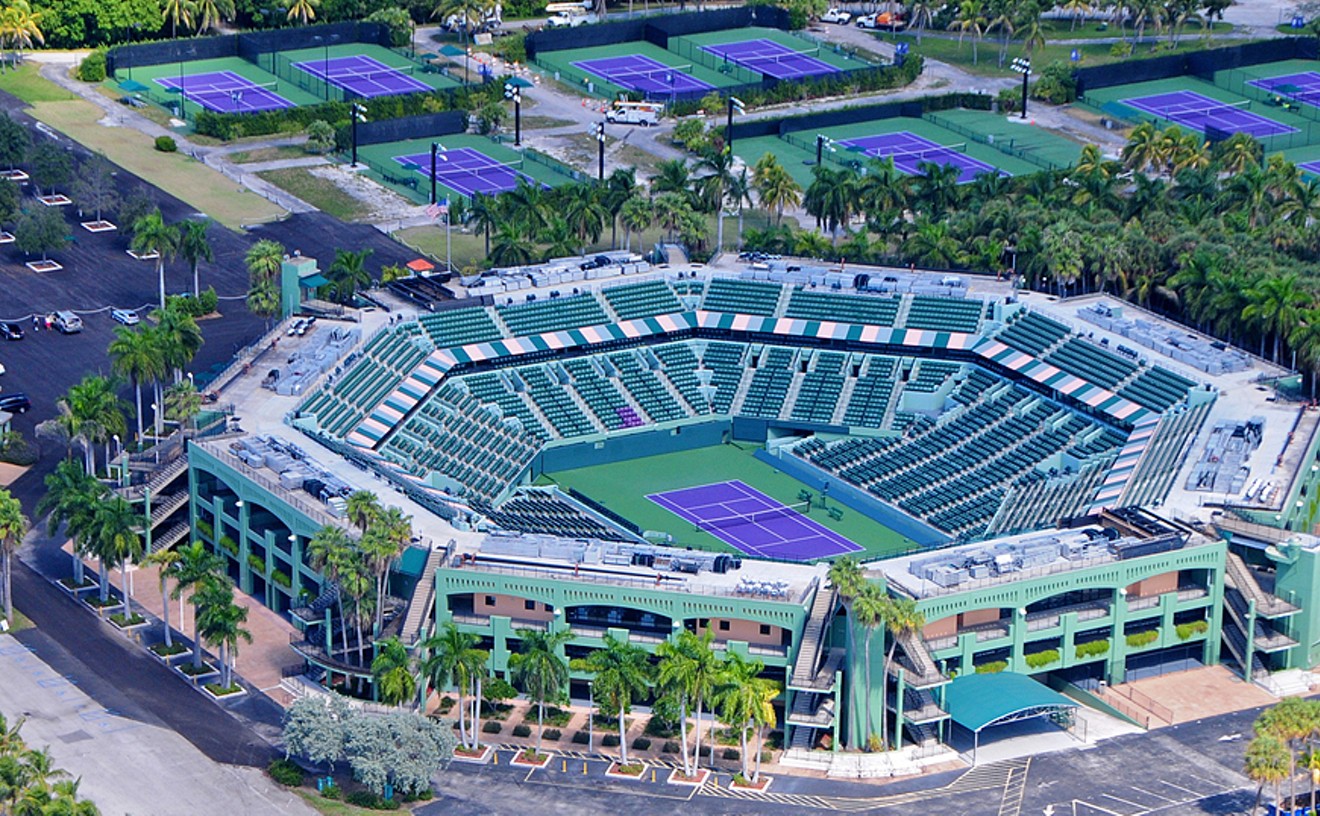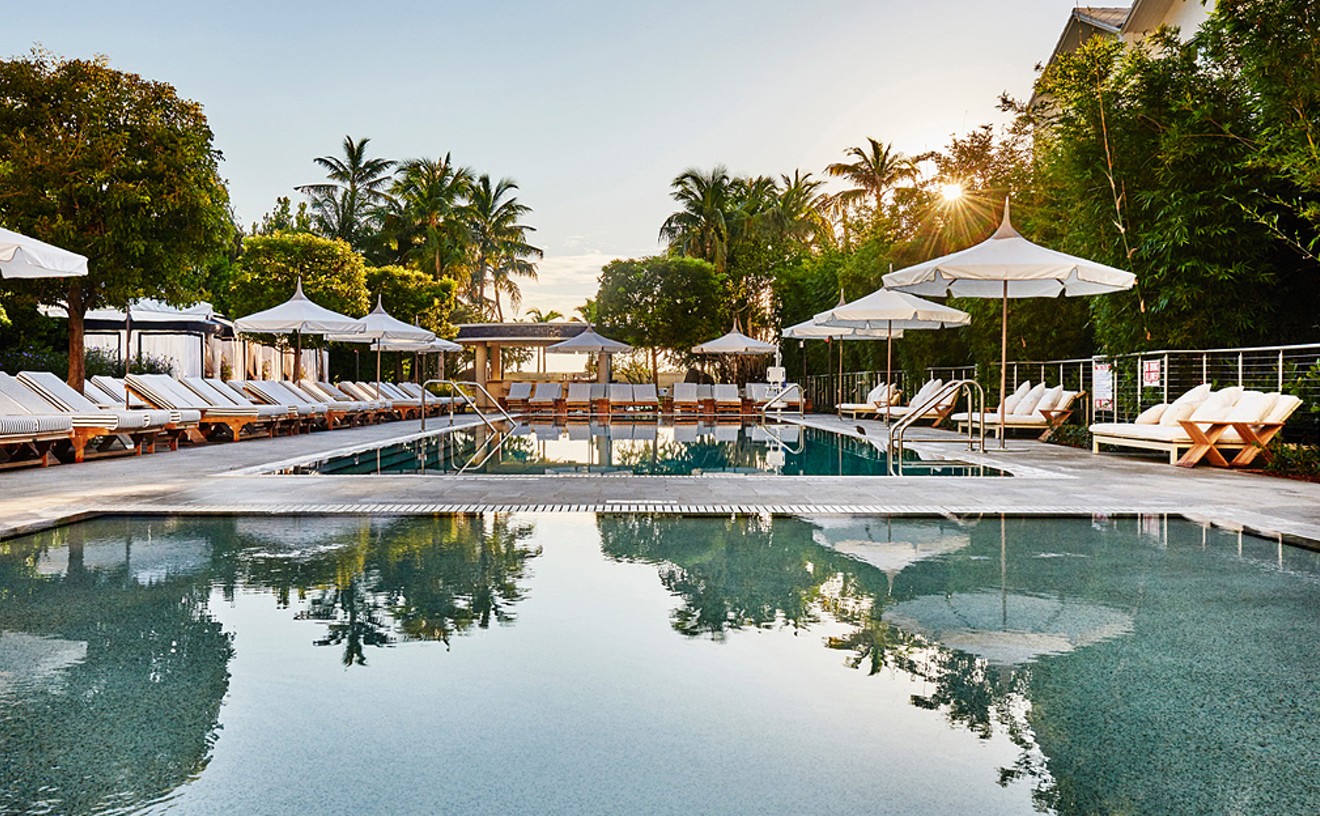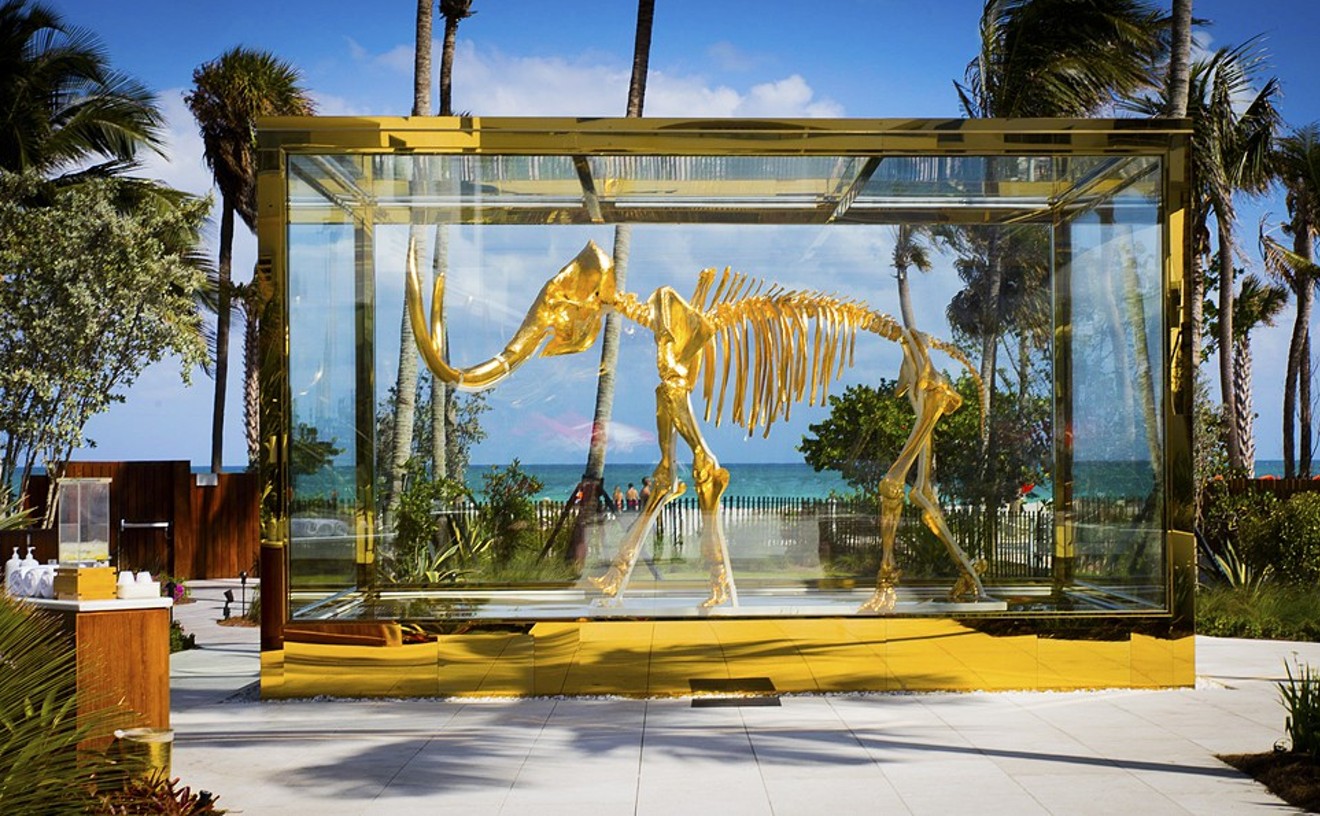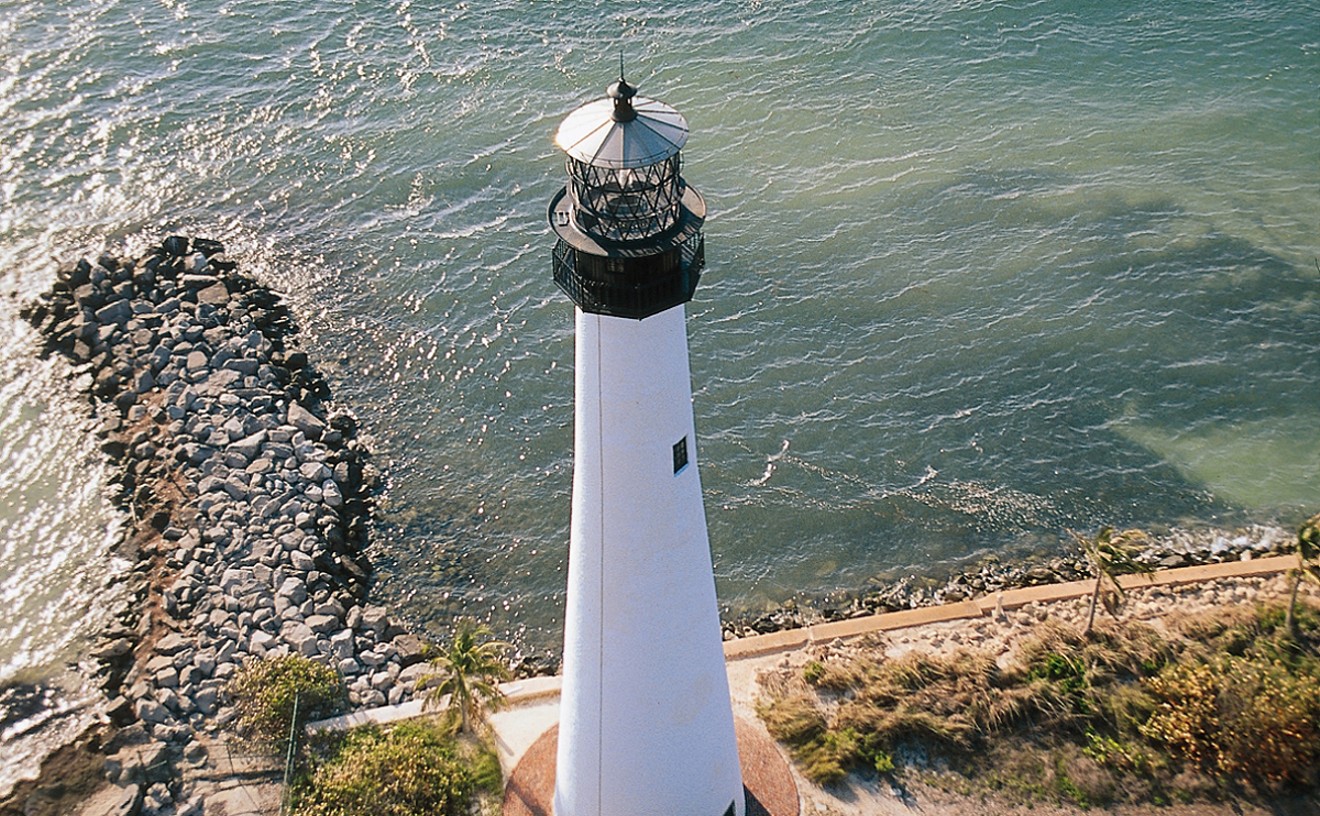Sorry to break it to you, fanboy, but it's highly unlikely you'll ever shoot on the same basket Dwyane Wade has dunked on or throw a football on the same field where Tom Brady once scored a touchdown. But in Miami, you can actually practice your backhand on the very same courts where Serena Williams and Novak Djokovic have played. For two star-studded weeks every year, the best tennis players on Earth descend upon Crandon Tennis Center on Key Biscayne for the Miami Open. But for the other 50 weeks, the same courts where pros vie for million-dollar prizes are open to any hacker with a racquet and the $7-to-$13-per-hour the courts cost to rent. There are 26 hard courts, including eight with lights. There are also six clay courts, two of which are red European clay, as well as two grass courts if you want to pretend you're at Wimbledon. Though you're more likely to see an egret or heron flying overhead in this scenic locale across the bay from Brickell, you might also stumble across Grand Slam champions Andy Murray or Juan Martin del Potro, who often use the site for training.
Best Tennis Courts
Tennis Center at Crandon Park

- 7300 Crandon Blvd., Key Biscayne, 33149 Map
- 305-365-2300
- miamidade.gov/parks/crandon-tennis.asp
Best Soccer Field
Miami Soccer Station

Some people seek spiritual renewal in a soaring, stained-glass cathedral, others at a stark Baptist altar. For another class of Miamians, they don their knockoff Barca kits, strap on their $45 Adidas cleats, and head to church every week on the soccer pitch. Just like any houses of organized religion, those pitches vary from the ostentatious — full fields of natural emerald grass — to the humble scraps of bumpy turf in a badly maintained park. Miami Soccer Station falls somewhere in between. In a small lot off NW 79th Street, affable Colombian owner Rafael Garzon — who owns multiple fields in Bogota — built two five-a-side pitches that are perfect for an after-work kick-around or a weekly competition among neighborhood friends. The fields cost just $100 to $120 per hour (which translates to a reasonable $10 to $12 per player if you don't have subs), and there's an air-conditioned break room with Gatorade for sale when the Florida heat gets you down. Garzon even built a foot-volley court in front where players can keep their skills sharp between games. For all local Messi worshippers, it's a welcome spiritual way station.
Readers' choice:
- 431 NW 79th St., Miami, 33150 Map
- 786-458-6365
- miamisoccerstation.com
Best Pool
Nautilus, a Sixty Hotel

For years, the Nautilus Hotel has hidden in plain sight. That's no fault of the hotel, a Morris Lapidus-designed gem in the heart of South Beach. It's just hard for any place to stand out when it's within two blocks of international celebrity hot spots such as the Delano and the Raleigh. But it's finally time for the Nautilus' own moment in the SoBe sun, thanks to a recent revamp under the Sixty Hotels group. And among the Nautilus' most striking deco details is its enviable pool deck. Architecturally simple, it's elevated by lush greenery that only augments its unembellished beauty. In the center is a 1,890-square-foot heated saltwater pool, perfect for doing a few laps or simply relaxing along the edge. An underwater sound system provides tunes for those who need a little encouragement while pulling out breaststrokes. Lounge chairs and cabanas along the gorgeous teak deck are available to rent, but the best spot is at the pool bar toward the back, where great tropical cocktails are on order. And the beach is only a few yards away in case you need to take the edge off the tropical heat. Daytime visitors can take a dip in the pool by renting a daybed ($150 weekdays and $250 weekends) or a cabana ($250 weekdays and $350 weekends).
- 1825 Collins Ave., Miami Beach, 33139 Map
- 305-503-5700
- sonesta.com/sonesta-hotels-resorts/fl/miami-beach/nautilus-sonesta-miami-beach
Best Hotel
Faena Hotel Miami Beach

The Feana Hotel Miami Beach officially opened its doors during Art Basel Miami Beach 2015. And even amid a global art festival built to make headlines with audacious shows and eye-catching works, Faena somehow stood out. The 24-karat-gold woolly mammoth skeleton by artist Damien Hirst in a glass case in the backyard didn't hurt. But the Faena's attraction goes well beyond its considerable art collection. The hotel drips with fascinating details, from the deco-inspired Saxony Bar to the funky indoor-outdoor feel of Argentine restaurant Los Fuegos to the first "South American-inspired spa" in town, Tierra Santa. Faena has immediately brought something resoundingly different to Miami's glut of always-revamping hotels. And there's more to come at this sprawling property. By the time Alan Faena and business partner Len Blavatnik have finished building their beachside utopia, it will include Faena House, Faena Forum, Faena Versailles, Faena Bazaar, and the Casa Claridge's guest houses. Miamians will be able to plan a staycation at the hotel, live in a condo at the House or the Versailles, see performances in its theaters, and even have office space in the Bazaar.
- 3201 Collins Ave., Miami Beach, 33140 Map
- 305-534-8800
- faena.com/miami-beach
Best Historic Landmark
The Curtiss Mansion & Gardens
In a city where history is constantly torn down and replaced by luxury condos, the Curtiss Mansion & Gardens is an enduring success story. Located in Miami Springs, the estate was home to Glenn Curtiss, the aviation pioneer and codeveloper of Miami Springs, Hialeah, and Opa-locka, from 1925 until the time of his death in 1930. Designed by Martin Luther Hampton, the same architectural mastermind behind Miami Beach City Hall and the Congress Building downtown, the mansion, like Miami Springs, was constructed in Pueblo Revival style. Though Curtiss lived in his two-story Miami Springs residence for only five years, 500 Deer Run continued to pave its way through history long after his death. His wife, who eventually remarried, lived in the mansion until the late ’40s with her second husband, who was mayor of Miami Springs from 1942 to 1944. Through the years, the property would bear the name “Miami Springs Villas.” It would later serve as a training base for the crew of Eastern Airlines and Pan American World Airways. The mansion was sold again in the late ’70s. Even though it was designated a local historic site under the City of Miami Springs’ History Preservation Ordinance in 1987, the building was abandoned for years, falling victim to vandalism and arson. At one point, the structure was held up by only pillars. But the property was donated to the City of Miami Springs in 1998, and the nonprofit Curtiss Mansion Inc. was established, symbolizing the beginning of a long restoration. In 2012, the Curtiss Mansion, carefully rebuilt to resemble its original 1925 condition, reopened its doors, proving that in spite of all the bulldozers, Miami still cares about preserving its history.
Readers' choice: Vizcaya Museum & Gardens
- 500 Deer Run, Miami Springs, 33166 Map
- curtissmansion.com
Best Cheap Thrill
Touring the Cape Florida Lighthouse

Sure, almost every born-and-bred 305er grew up going to the beach at el farito (AKA Bill Baggs Cape Florida State Park), but you’d be surprisingly hard-pressed to find a Miamian who has toured the Cape Florida Lighthouse. And as one of the oldest lighthouses in South Florida, Cape Florida has a fascinating history — not to mention one of the best views of Key Biscayne, Stiltsville, and beyond. Built in 1825 as a 65-foot structure, the lighthouse has survived everything from hurricanes to attacks, including one by the Seminoles during the Second Seminole War in 1836, which resulted in a fire that nearly led to the lighthouse’s demise. Later, Confederate sympathizers destroyed its lamp and lens during the Civil War in 1861. While Cape Florida was abandoned and decommissioned several times over the years before being rebuilt, relit, and eventually raised to 95 feet, it has served several functions throughout the decades. Among them, it was used as U.S. Signal Station Number Four during the Spanish-American War and, most notably, was part of the National Underground Railroad Network to Freedom, where hundreds of black Seminoles escaped from Florida to the Bahamas. Sure, Cape Florida’s history is interesting itself, but nothing beats the spiraling 109 steps to drink in the views of the Magic City from the top. And luckily, you can experience it free Thursday through Monday from 10 a.m. to 1 p.m.
- 1200 S. Crandon Blvd., Key Biscayne, 33149 Map
- 305-361-5811
- floridastateparks.org/park/Cape-Florida
Best-Kept Secret
The Southern Cross Astronomical Society's Weekly Star Party

You won’t find lasers or neon lights at this rager. But if you’re lucky enough, you just might get to party with some of the hottest stars in the galaxy. We’re talkin’ Polaris, Perseus, and the Pleiades. Having trouble recognizing these names? Then the Southern Cross Astronomical Society’s Weekly Star Party is definitely one you want to crash. The stellar bash goes down every Saturday at 8 p.m. at Bill Sadowski Park in Palmetto Bay, where you’ll get to hang out with local astronomers, learn about the solar system, and check out constellations, stars, the moon, and maybe even a planet or two. Though SCAS has been offering free viewings and lectures to the public since 1922, only a select few have heard of the organization. But don’t worry — you don’t have to be on the VIP list to join this fete. SCAS’ Star Party is open to everyone of all ages. And the best part: There’s no cover or BYOT (bring your own telescope) policy — all you have to do is show up. Special events are held periodically, so be sure to check out their website before you head out.
- 17555 SW 79th Ave., Palmetto Bay, 33157 Map
- 305-255-4767
- www.miamiandbeaches.com/parks/bill-sadowski-park-and-nature-center/110486
Best Place to Be a Kid Again
Laserland & Adventure
We’ve all done questionable things as kids — raided the kitchen cabinet and mixed up all the ingredients just because we had nothing better to do, taped the bathroom door shut while our older sister showered, attempted to fish with paper clips and marshmallows. But every now and then, we surprised our parents by joining in normal childhood activities such as laser tag. And no other place in the 305 lets you unleash your inner 12-year-old like 3,000 square feet of nonstop laser tag action — fog, black lights, and multilevel forts included — at Laserland & Adventure. Unlike offering a typical game of laser tag where you simply point and shoot, Laserland provides an alternative to the norm: namely, special missions. During this variation of the game, you receive special laser powerups and abilities to help you score the most points and complete your laser tag mission. You have only 20 minutes, so if you want to be crowned laser tag royalty, strategy is key. But don’t worry — even if you come in last, you can still get your competitive fix with plenty of air hockey and videogames in the arcade lobby. Here’s to being 12 again.
- 9065 NW 13th Terrace, Doral, 33172 Map
- 786-762-2156
- laserlandadventure.com





